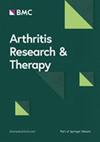Factors related to elevated serum immunoglobulin G4 (IgG4) levels in a Japanese general population
IF 4.9
2区 医学
Q1 Medicine
引用次数: 0
Abstract
Elevated serum immunoglobulin G4 (IgG4) concentrations are one of the characteristic findings in IgG4-related disease (IgG4-RD). This study investigated the frequency of elevated serum IgG4 levels and associated factors in a general Japanese population. Serum IgG4 concentrations were measured in 1,201 residents of Ishikawa prefecture who underwent general medical examinations. Factors associated with elevated serum IgG4 concentrations were assessed by logistic regression analysis. Participants with elevated serum IgG4 were subjected to secondary examinations. The mean serum IgG4 concentration was 44 mg/dL, with 42 (3.5%) participants having elevated serum IgG4 levels. Age- and sex-adjusted logistic regression analyses showed that male sex, older age, and lower intake of lipids and polyunsaturated fatty acids and higher intake of carbohydrates in daily diet were associated with elevated serum IgG4 concentration. Subgroup analyses in men showed that older age, lower estimated glomerular filtration rates based on serum cystatin C (eGFR-cysC) levels, and higher hemoglobin A1c (HbA1c) levels were associated with elevated serum IgG4 concentration. Analyses in women showed that lower intake of lipids and fatty acids and higher intake of carbohydrates were significantly associated with elevated serum IgG4 concentration. One of the 15 participants who underwent secondary examinations was diagnosed with possible IgG4-related retroperitoneal fibrosis. Elevated serum IgG4 levels in a Japanese general population were significantly associated with older age, male gender, and dietary intake of nutrients, with some of these factors identical to the epidemiological features of IgG4-RD.日本普通人群血清免疫球蛋白 G4 (IgG4) 水平升高的相关因素
血清免疫球蛋白 G4(IgG4)浓度升高是 IgG4 相关疾病(IgG4-RD)的特征性结果之一。本研究调查了日本普通人群中血清 IgG4 水平升高的频率及相关因素。对石川县 1201 名接受一般体检的居民进行了血清 IgG4 浓度测定。通过逻辑回归分析评估了与血清 IgG4 浓度升高相关的因素。对血清 IgG4 浓度升高的参与者进行了二次检查。平均血清 IgG4 浓度为 44 mg/dL,其中 42 人(3.5%)的血清 IgG4 水平升高。年龄和性别调整后的逻辑回归分析表明,男性、年龄较大、日常饮食中脂类和多不饱和脂肪酸摄入量较低以及碳水化合物摄入量较高与血清 IgG4 浓度升高有关。对男性进行的亚组分析表明,年龄较大、根据血清胱抑素 C(eGFR-cysC)水平估算的肾小球滤过率较低以及血红蛋白 A1c(HbA1c)水平较高与血清 IgG4 浓度升高有关。对女性进行的分析表明,脂类和脂肪酸摄入量较低和碳水化合物摄入量较高与血清 IgG4 浓度升高有显著关系。在接受二次检查的 15 名参与者中,有一人被诊断出可能患有与 IgG4 相关的腹膜后纤维化。在日本普通人群中,血清IgG4水平升高与年龄、男性和膳食营养摄入量明显相关,其中一些因素与IgG4-RD的流行病学特征相同。
本文章由计算机程序翻译,如有差异,请以英文原文为准。
求助全文
约1分钟内获得全文
求助全文
来源期刊

Arthritis Research & Therapy
RHEUMATOLOGY-
CiteScore
8.60
自引率
2.00%
发文量
261
审稿时长
14 weeks
期刊介绍:
Established in 1999, Arthritis Research and Therapy is an international, open access, peer-reviewed journal, publishing original articles in the area of musculoskeletal research and therapy as well as, reviews, commentaries and reports. A major focus of the journal is on the immunologic processes leading to inflammation, damage and repair as they relate to autoimmune rheumatic and musculoskeletal conditions, and which inform the translation of this knowledge into advances in clinical care. Original basic, translational and clinical research is considered for publication along with results of early and late phase therapeutic trials, especially as they pertain to the underpinning science that informs clinical observations in interventional studies.
 求助内容:
求助内容: 应助结果提醒方式:
应助结果提醒方式:


